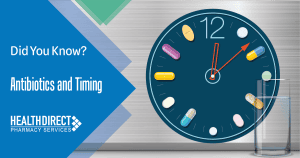What is Tardive Dyskinesia? [1,2]
Tardive Dyskinesia (TD) is an involuntary movement disorder characterized by uncontrollable, abnormal and
repetitive movements of the face, torso and /or other body parts. The physical symptoms of TD often can be persistent and disruptive to an individual’s emotional and social well-being.
TD is caused by prolonged use of treatments that block dopamine receptors in the brain, such as antipsychotics commonly prescribed to treat mental health conditions including schizophrenia, bipolar disorder, and depression, and certain anti-nausea medications. These medications are referred to as dopamine-receptor blocking agents, or DRBAs. In individuals with TD, these treatments are thought to result in irregular dopamine signaling in a region of the brain that controls movement.
Differentiating Drug-Induced Movement Disorders (DIMDs) [2,3]
It is important to differentiate tardive dyskinesia from acute drug-induced movement disorders, as TD differs in pathophysiology and clinical management. For example, anticholinergic medications may improve drug-induced parkinsonism, and worsen tardive dyskinesia. Characterization and presentation of symptoms, including onset from introduction of the DRBA, can help differentiate these movement disorders to inform an accurate diagnosis and management plan.
| DRBA-Induced Movement Disorders | Onset Timing | Common Distinguishing Features | |
|---|---|---|---|
| Tardive dyskinesia (TD) | Onset is generally later; months to years | Repetitive movements: commonly grimacing, sticking out of tongue or smacking of lips. ■ Movements can include limbs/trunk ■ May be rapid jerking movements or slow writhing movements | |
| Acute Drug-Induced Movement Disorders | Acute dystonia | Hours to days | Pulling, twisting, sustained and repetitive movements that are usually focal. |
| Acute Drug-Induced Movement Disorders | Akathisia | Days to months | Inner feeling of restlessness and inability to remain seated. May be associated with foot tapping, shuffling, shifting weight, or rocking, resulting from an urge to move. |
| Acute Drug-Induced Movement Disorders | Drug-induced parkinsonism (DIP) | Weeks to months | ■ Tremor ■ Slowing of movement ■ Rigidity ■ Reduced blink rate ■ Reduced arm swing ■ Flexed posture ■ Shuffling or freezing gait |
Monitoring for Drug-Induced Movement Disorders [1]
- TD is a medication-induced movement disorder associated with prolonged use of dopamine receptor blocking agents (DRBAs), including antipsychotics
| MEDICATIONS THAT MAY REQUIRE MONITORING FOR TD | ||
|---|---|---|
| FIRST-GENERATION ANTIPSYCHOTICS | ||
| ■ Chlorpromazine (Thorazine) ■ Molindone (Moban)4 ■ Fluphenazine (Prolixin) | ■ Loxapine (Loxitane) ■ Haloperidol (Haldol) ■ Perphenazine (Trilafon) | ■ Thioridazine (Mellaril) ■ Thiothixene (Navane) ■ Trifluoperazine (Stelazine) |
| SECOND-GENERATION ANTIPSYCHOTICS | ||
| ■ Aripiprazole (Abilify) ■ Asenapine (Saphris) ■ Brexpiprazole (Rexulti) ■ Cariprazine (Vraylar) ■ Clozapine (Clozaril) ■ lloperidone (Fanapt) | ■ Loxapine (Loxitane) ■ Lumateperone (Caplyta) ■ Lurasidone (Latuda) ■ Olanzapine (Zyprexa) ■ Paliperidone (Invega) ■ Pimavanserin (Nuplazid) | ■ Quetiapine (Seroquel, Seroquel XR) ■ Risperidone (Risperdal) ■ Ziprasidone (Geodon) |
| OTHER DRBAs | ||
| ■ Prochlorperazine (Compazine, Compro) ■ Promethazine (Phenergan, Promethegan, Phenadoz) | ■ Trimethobenzamide(Tebamide, Tigan) ■ Thiethylperazine (Torecan) | ■ Metoclopramide (Reglan) |
The American Psychiatric Association (APA) recommends: [4]
- Screen for TD before starting or changing DRBA treatment
- Monitor for signs of TD at every clinical encounter
- Conduct a structured TD assessment every 6 to 12 months, depending on patient’s risk, and if new or worsening movements are detected at any clinical encounter
The Abnormal Involuntary Movement Scale (AIMS) is the standard structured assessment for the initial
screening and the routine monitoring of TD symptoms.
This 10-minute patient assessment uses a 5-point rating scale for recording movement scores for 7 body areas: face, lips, jaw, tongue, upper extremities, lower extremities, and trunk.
Download: Abnormal Involuntary Movement Scale (AIMS) Worksheet
Treatment Approaches of DRBA-Induced Movement Disorders [3,5]
| Action | TD | Acute Dystonia | Acute Akathisia | DIP |
|---|---|---|---|---|
| Add VMAT-2 inhibitor | Improves (approved for treatment of TD) | May worsen | Insufficient data | May worsen |
| Increase DRBA dose | May initially “mask” symptoms | May trigger or worsen | May trigger or worsen | May trigger or worsen |
| Discontinue DRBA or reduce dose | May initially reveal or worsen symptoms, over time may lead to improvement | Improves | Improves | Improves |
| Add anticholinergic | May worsen | May improve | Insufficient data | Improves (approved for treatment of parkinsonism) |
| Discontinue anticholinergic | May improve | May worsen | Insufficient data | May worsen |
*Anticholinergic agents, such as benztropine, are not recommended for use in patients with tardive dyskinesia, and may aggravate and worsen symptoms in these patients.
VMAT-2 inhibitors are the only FDA-approved treatment for TD, per the 2020 APA Guidelines treatment with
a VMAT-2 inhibitor is recommended in patients with moderate to severe TD and may also be considered in
patients with mild TD. These medications offer the ability to treat TD while preserving stable antipsychotic
regimens.
VMAT-2 inhibitors reversibly bind a transporter that regulates monoamine uptake from the cytoplasm to the
synaptic vesicle for storage and release. Inhibition of VMAT-2 decreases dopamine release and post-synaptic receptor stimulation, thereby decreasing dyskinesia. The attached table provides a brief comparison of FDA approved VMAT-2 inhibitors valbenazine and deutetrabenazine. [5,6]
Comparison of VMAT-2 Inhibitors for Tardive Dyskinesia
| Valbenazine [6,7] | Deutetrabenazine [6,8] | |
|---|---|---|
| Brand name | Ingrezza | Austedo |
| Available dose formulation | Capsules: 40, 60, 80 mg | Tablets: 6, 9, and 12 mg XR (extended-release) 6, 9 and 24 mg |
| Other indications | None | Chorea associated with Huntington’s disease |
| Contraindications relevant to TD | None | Hepatic impairment, use of reserpine, MAOIs, tetrabenazine or valbenazine |
| Warnings and precaution contained in Highlights of Prescribing Information | Somnolence; QT interval prolongation | QT interval prolongation; neuroleptic malignant syndrome; akathisia, agitation, restlessness, and parkinsonism (latter not applicable to TD); sedation/somnolence |
| Dosing frequency | Once daily | Twice daily (IR) Once daily (XR) |
| Recommended dosing | Take with or without food; start at 40 mg daily, increase to 80 mg daily after 1 week | Take with food; start at 12 mg/day, increase by 6 mg/day at weekly intervals up to 48 mg/day, based on tolerability and response |
| CYP2D6 poor metabolizers | Maximum recommended dose is 40 mg/ day | Maximum recommended dose is 36 mg/day |
| Hepatic impairment | Moderate-to-severe hepatic impairment: maximum recommended dose is 40 mg/day | Contraindicated |
| Renal impairment | Dosage adjustments are not necessary for patients with mild, moderate, or severe renal impairment | Package insert does not provide any recommendations (cites a lack of studies in this population), but the metabolites are excreted renally |
| Drug-drug interactions | Valbenazine increases digoxin levels; consider valbenazine dose reduction with strong CYP2D6 inhibitors; with strong CYP3A4 inhibitors the maximum recommended dose is 40 mg daily; use is not recommended with MAOIs or CYP3A4 inducers | Additive sedation may occur with alcohol and other CNS depressants; with strong CYP2D6 inhibitors, the recommended maximum dose is 36 mg/day |
| QT prolongation recommendation | If the patient is at increased risk for QT prolongation, assess QT interval before increasing the dose | If the patient is at increased risk for QT prolongation, assess QT interval before and after increasing the dose above 24 mg/day |
References:
- American Psychiatric Association. Diagnostic and Statistical Manual of Mental Disorders-Text Revision. 5th ed. Arlington, VA: American Psychiatric Association; 2022.
- Ward, K. M., & Citrome, L. (2018). Antipsychotic-Related Movement Disorders: Drug-Induced Parkinsonism vs. Tardive Dyskinesia-Key Differences in Pathophysiology and Clinical Management. Neurology and therapy, 7(2), 233–248. https://doi.org/10.1007/s40120-018-0105-0
- Hauser, R. A., Meyer, J. M., Factor, et al. (2022). Differentiating tardive dyskinesia: a video-based review of antipsychotic-induced movement disorders in clinical practice. CNS spectrums, 27(2), 208–217. https://doi.org/10.1017/S109285292000200X
- Keepers, G. A., Fochtmann, L. J., Anzia, et al. The American Psychiatric Association Practice Guideline for the Treatment of Patients With Schizophrenia. The American journal of psychiatry, 177(9), 868–872. https://doi.org/10.1176/appi.ajp.2020.177901
- Bhidayasiri, R., Jitkritsadakul, O., Friedman, J. H., et al. (2018). Updating the recommendations for treatment of tardive syndromes: A systematic review of new evidence and practical treatment algorithm. Journal of the neurological sciences, 389, 67–75. https://doi.org/10.1016/j.jns.2018.02.010
- Touma, K. T. B., & Scarff, J. R. (2018). Valbenazine and Deutetrabenazine for Tardive Dyskinesia. Innovations in clinical neuroscience, 15(5-6), 13–16.
- Ingrezza (valbenazine) capsules package insert. San Diego, CA: Neurocrine Biosciences, Inc.; 2021 Apr
- Austedo and Austedo XR (deutetrabenazine) tablets package insert. Parsippany, NJ: Teva Neuroscience, Inc.; 2023 Feb




